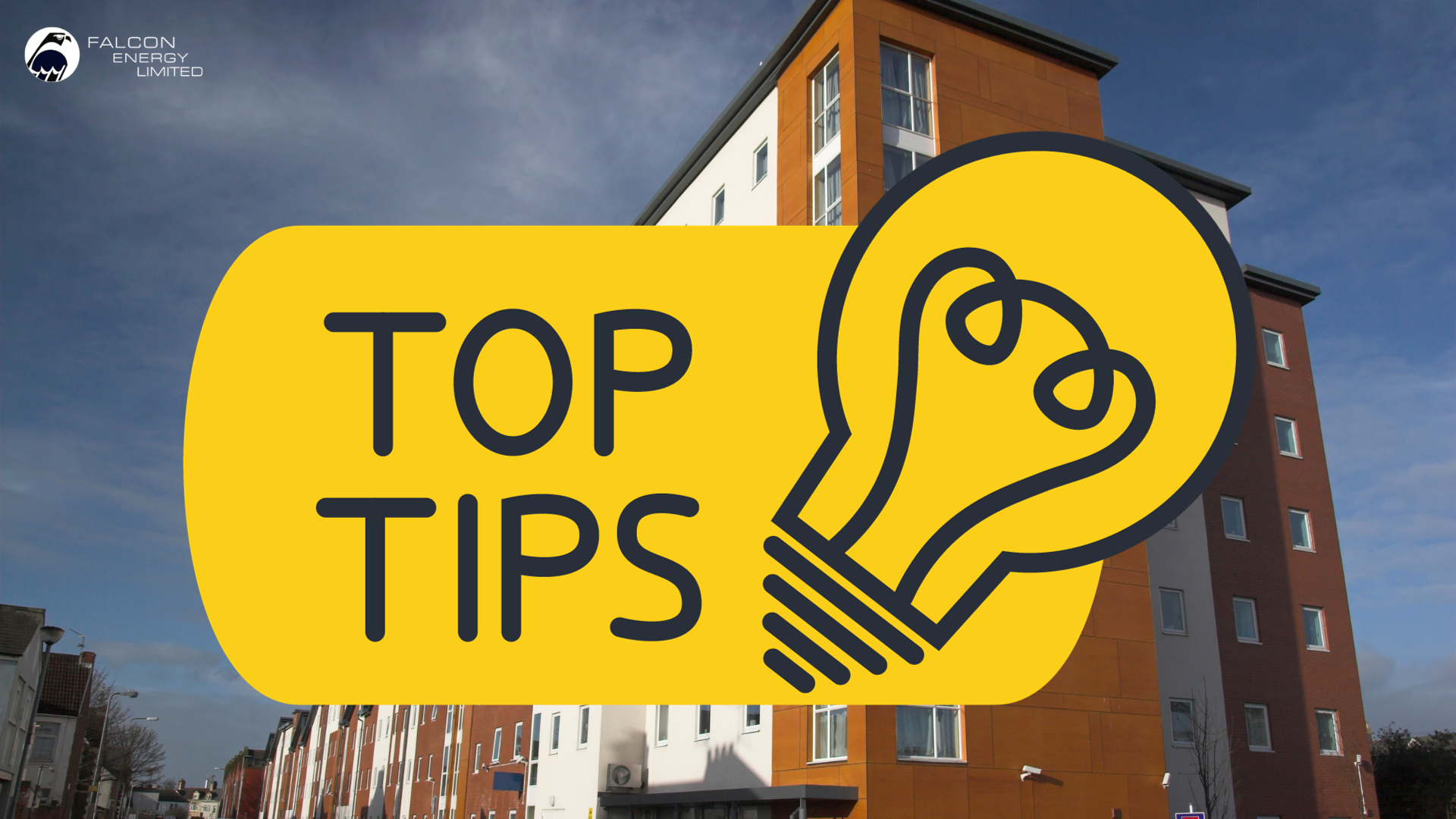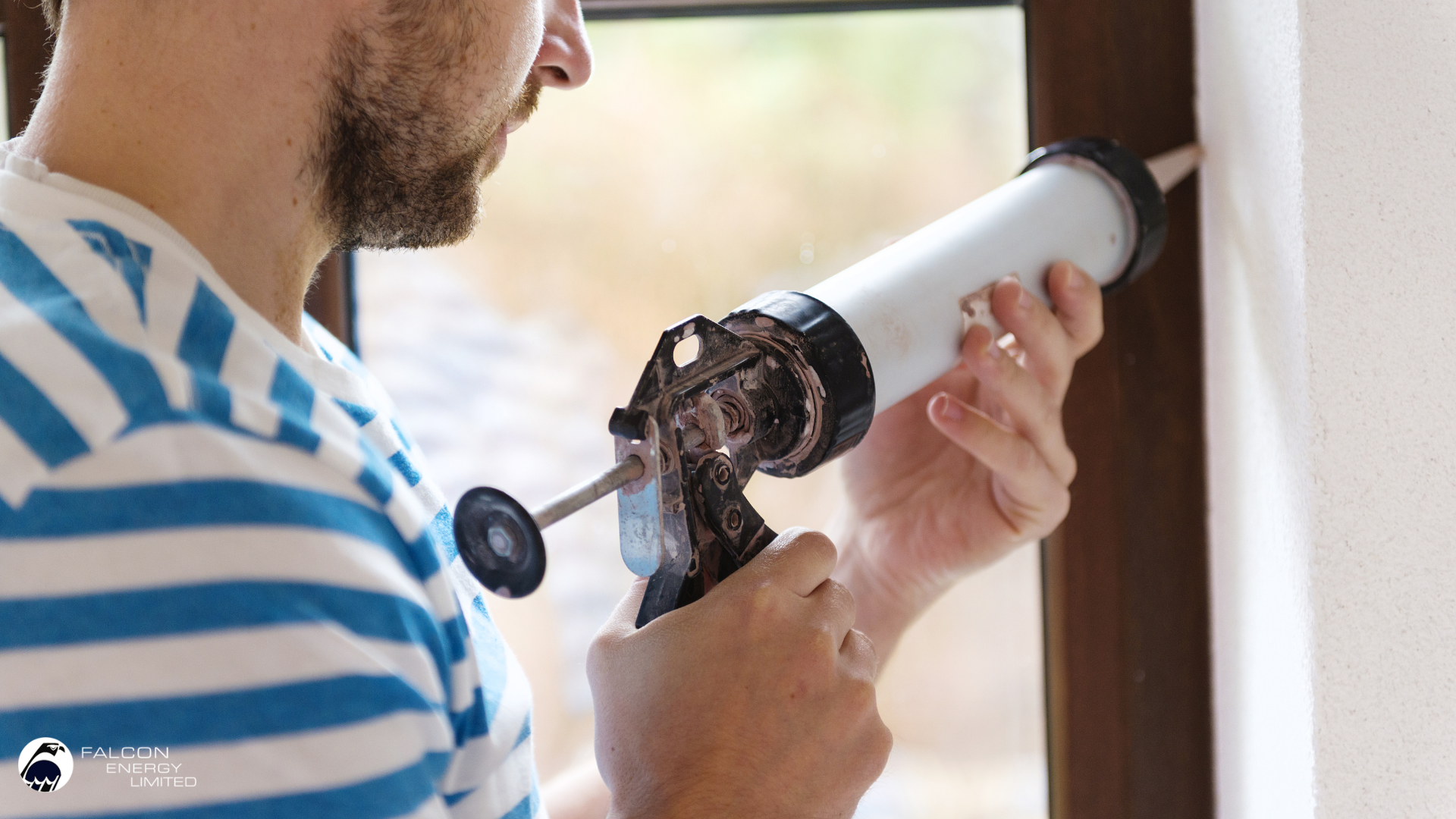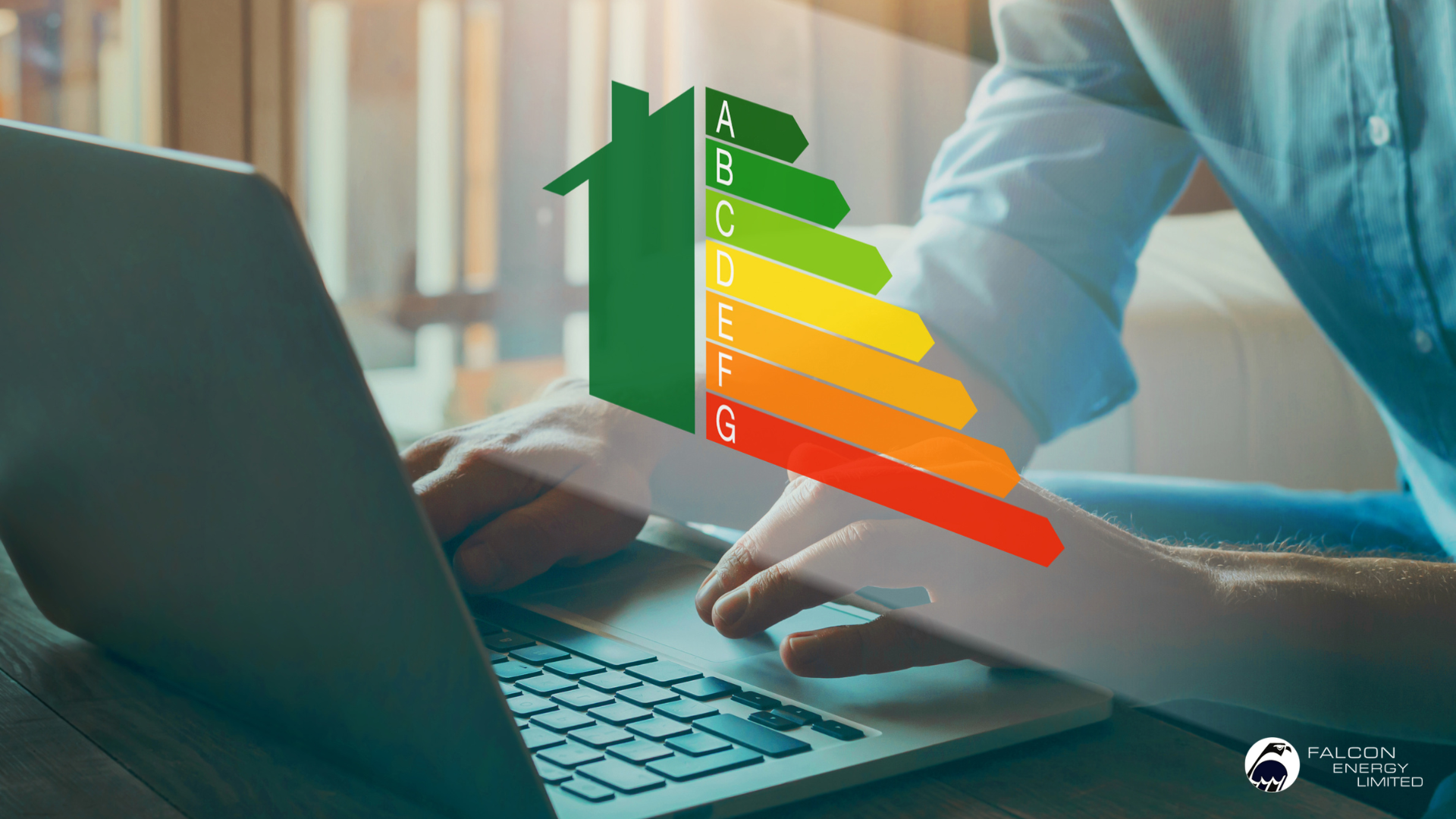Improving the Energy Performance Certificate (EPC) rating of a flat is not only beneficial for reducing energy consumption and greenhouse gas emissions, but it can also lead to lower energy bills and increased comfort for residents.
Whether you are a homeowner or a tenant, there are several effective strategies that can be implemented to enhance the energy efficiency of your flat and ultimately improve its EPC rating.
This article will provide valuable tips on how to achieve a higher EPC rating, ultimately contributing to a more sustainable and cost-effective living space.

Top Tips:
Insulate the property
Proper insulation is one of the most effective ways to improve the energy efficiency of a flat. Insulate the walls, roof, and floors to reduce heat loss and keep the property warmer in winter and cooler in summer. When insulating a property, there are a few key factors to consider. Here are some important aspects to look for and the professionals you can contact for assistance:
Look for insulation materials such as fibreglass, cellulose, or foam that can be installed within the walls. This helps to prevent heat transfer through the walls, keeping the indoor temperature comfortable.
Insulating floors is crucial, especially for properties with suspended floors or basements. It helps to prevent heat loss and drafts from entering through the ground. Look for materials like rigid foam boards or spray foam insulation.
It is advisable to hire professional insulation contractors who specialise in insulation installation. They have the expertise to assess your property, recommend the appropriate insulation materials, and ensure proper installation. Look for contractors with good reviews, certifications, and experience in residential insulation. If you would like local recommendations, please contact us.
Consider getting an energy audit conducted by a professional energy auditor. We will assess your property's energy efficiency and provide recommendations for insulation improvements. This can help identify specific areas that require insulation and guide you in making the right choices.
Upgrade windows and doors
Installing double or triple glazing windows and energy-efficient doors can significantly reduce heat loss and improve the EPC rating. Look for windows and doors with a high energy rating and good insulation properties.
In addition to upgrading windows and doors with double or triple glazing, there are several other factors to consider when looking for energy-efficient options:
Opt for window and door frames made from materials with high insulation properties, such as uPVC, fibreglass, or wood with a thermal break. These materials provide better insulation and minimise heat transfer.
Low-emissivity (Low-E) glass coatings can further enhance the energy efficiency of windows and doors. These coatings help to reflect heat back into the room and reduce heat loss through the glass.
Double or triple glazing units can have the space between the panes filled with inert gases like argon or krypton. These gases have lower thermal conductivity than air, improving insulation and reducing heat transfer.
Proper weatherstripping and sealing around windows and doors are crucial to prevent drafts and air leakage. Choose products with effective seals and ensure proper installation to minimise heat loss.
Look for windows and doors that have been certified by reputable energy efficiency programs, such as ENERGY STAR. These products undergo rigorous testing and meet specific performance standards for energy efficiency.
Incorporating passive solar design principles can further improve the energy efficiency of windows and doors. This includes optimising window placement to capture sunlight during colder months while shading them during warmer months.
Install energy-efficient lighting
Replace traditional incandescent bulbs with energy-saving LED lights. LED bulbs use significantly less energy and have a longer lifespan, making them a cost-effective and eco-friendly choice.
LED (light-emitting diode) lighting is a highly energy-efficient alternative to traditional incandescent bulbs. These bulbs use up to 80% less energy than incandescent bulbs, resulting in significant energy savings. LED bulbs also have a longer lifespan, typically lasting 10-20 times longer than traditional bulbs. This not only reduces the need for frequent replacements but also minimises waste.
One of the key features of LED lighting is its ability to emit light in a specific direction, unlike traditional bulbs that emit light in all directions. This directional lighting ensures that the light is focused where it is needed, reducing unnecessary energy wastage. Additionally, LED lights can be dimmed, further increasing their energy efficiency.
LED bulbs are available in a variety of shapes and sizes, making them suitable for various applications. From standard household bulbs to speciality lighting for outdoor spaces, LED options are widely available. They also come in a range of colour temperatures, allowing you to select the desired ambience and mood for your space.
While LED bulbs may have a higher upfront cost compared to traditional incandescent bulbs, their energy savings and longer lifespan make them a cost-effective choice in the long run. Over time, the reduced energy consumption can lead to significant savings on electricity bills.
Switching to LED lighting not only benefits your wallet but also contributes to a greener environment. The reduced energy consumption translates into lower greenhouse gas emissions and less dependence on fossil fuels. Furthermore, LED bulbs do not contain harmful substances such as mercury, making them safer for both human health and the environment.
Upgrade heating system
Installing a more efficient heating system, such as a condensing boiler or heat pump, can significantly improve the energy efficiency and EPC rating of a property. These systems are designed to use less energy to produce heat, resulting in lower energy bills and reduced carbon emissions.
A condensing boiler is a highly efficient heating system that extracts heat from the exhaust gases produced during combustion. Unlike traditional boilers, which release waste gases into the atmosphere, a condensing boiler captures and reuses this heat. This process makes condensing boilers much more efficient, as they can achieve efficiencies of up to 98%. By upgrading to a condensing boiler, homeowners can reduce their energy consumption and save money on heating costs.
Heat pumps are another excellent option for increasing energy efficiency. They work by extracting heat from the air or ground and transferring it into the property. This process requires much less energy compared to traditional heating systems that generate heat through combustion. Heat pumps can achieve high levels of efficiency, with some models providing up to four units of heat for every unit of electricity consumed.
When considering the installation of a more efficient heating system, it is essential to consult with a qualified heating engineer or energy assessor. We can assess the property's heating requirements, recommend the most suitable system, and ensure that the installation meets all necessary regulations and standards.

Use smart heating controls
Smart heating controls, such as programmable thermostats, are an excellent addition to any home or property. They offer advanced features that allow for more efficient temperature regulation and energy usage. Here are some additional details about smart heating controls and how they can benefit you:
Energy-efficient programming
With programmable thermostats, you can easily set heating schedules to match your daily routine. You can program different temperature settings for specific times of the day or week, ensuring that you only heat the property when necessary. This helps to reduce energy waste and lower heating costs.
Remote temperature control
One of the significant advantages of smart heating controls is the ability to control the temperature remotely. Many smart thermostats come with smartphone apps or web portals that allow you to adjust the temperature from anywhere. This feature is particularly useful if you forget to adjust the thermostat before leaving the property or if you want to warm up the space before arriving home.
Learning capabilities
Some smart heating controls have learning capabilities that adapt to your preferences and behaviours over time. They can analyse your heating patterns and make automatic adjustments to optimise energy usage. For example, if you consistently lower the temperature at night, the thermostat will learn this and adjust the settings accordingly.
Zone heating
Certain smart heating systems enable zone heating, which allows you to control the temperature in different areas or rooms of your property independently. This is especially beneficial if you have multiple occupants with different temperature preferences or if some areas of the property are rarely used. Zone heating helps to maximise comfort while minimising energy consumption.
Energy usage monitoring
Many smart heating controls provide energy usage reports and insights, allowing you to track your heating consumption patterns. These reports can help you identify areas where you can further optimise energy usage and make informed decisions to reduce your environmental impact.
Integration with other smart home devices
Smart heating controls can integrate with other smart home devices, such as smart lighting or motion sensors. This integration allows for a more holistic approach to energy management, where different devices work together to maximise energy efficiency. For example, if a motion sensor detects no activity in a room, it can signal the thermostat to lower the temperature automatically.
By installing smart heating controls, you can take advantage of their advanced features to regulate the temperature more efficiently and reduce energy waste. Not only will this benefit you financially by lowering heating costs, but it will also contribute to a more sustainable and eco-friendly lifestyle.
Use energy-efficient appliances
When replacing appliances, choose ones with a high energy efficiency rating. Look for appliances labelled with the Energy Star logo, as they are the most energy-efficient options available.

Reduce air leakage
Seal any gaps or cracks in windows, doors, and walls to prevent drafts and air leakage. This will help to keep the property insulated and reduce energy waste.
Air leakage refers to the unintentional movement of air in and out of a building through gaps, cracks, and openings. This can lead to energy waste, increased utility bills, and reduced comfort levels.
To reduce air leakage, here are some additional details:
Identify areas of air leakage
Conduct a thorough inspection of your property to identify any gaps or cracks where air may be leaking. Common areas include windows, doors, electrical outlets, vents, and pipes.
Weatherstripping
Install weatherstripping around windows and doors to create a tight seal. Weatherstripping comes in various materials such as adhesive-backed foam, V-strip, or door sweeps. Choose the appropriate type based on the size and location of the gap.
Caulking
Use caulk to seal gaps and cracks in walls, ceilings, and floors. Apply caulk around window frames, baseboards, and any other areas where air may be leaking. Silicone or latex-based caulk are commonly used for this purpose.

Seal electrical outlets
Install foam gaskets or outlet seals behind electrical outlets and switch plates to prevent air leakage through these openings. This simple step can significantly reduce drafts.
Insulate attic and crawl spaces
Properly insulate attics and crawl spaces to prevent air leakage from these areas. Insulation helps maintain a consistent temperature inside the building and reduces the load on heating and cooling systems.
Use door sweeps and thresholds
Install door sweeps at the bottom of exterior doors to seal the gap between the door and the threshold. This prevents air from entering or escaping under the door.
Seal ductwork
Leaky ducts can cause significant air leakage and reduce the efficiency of your heating and cooling system. Use mastic sealant or metal tape to seal joints and connections in the ductwork.
Air Tightness Testing
Consider hiring a professional to conduct a blower door test. This test helps identify specific areas of air leakage and provides guidance on the most effective ways to seal them. We are able to conduct an air tightness test.
Reducing air leakage not only improves energy efficiency but also enhances indoor air quality and comfort. By sealing gaps and cracks, you can create a more comfortable living or working environment while reducing your carbon footprint and utility bills.
Conduct an energy assessment:
Hire a qualified energy assessor to conduct an EPC assessment of the property. We can provide specific recommendations tailored to the flat's requirements, helping you identify areas for improvement and achieve a higher EPC rating.
Where can I find my EPC rating?
Your EPC (Energy Performance Certificate) rating can be found on the EPC itself or in the accompanying report. If you can't locate the physical copy, you can check online on the EPC Register website by entering your property's address or the EPC certificate number.

Who does the EPC assessment?
The Energy Performance Certificate assessment is typically conducted by a qualified energy assessor. This can be an individual or a company that specialises in performing energy assessments and providing energy efficiency recommendations for buildings.
Why should I improve my energy rating?
Improving your energy rating has several benefits that make it worth considering. Firstly, it helps reduce your energy consumption and, consequently, your utility bills. By making energy-efficient upgrades to your home, such as installing insulation, using energy-saving appliances, or upgrading to LED lighting, you can significantly decrease your energy usage. This leads to lower monthly bills and long-term savings, which can be especially beneficial for homeowners or renters on tight budgets.
Secondly, improving your energy rating contributes to a greener and more sustainable environment. Energy production, particularly from non-renewable sources like coal or oil, often results in harmful greenhouse gas emissions. By reducing your energy consumption, you indirectly help mitigate these emissions and combat climate change. Energy-efficient improvements also promote the use of renewable energy sources, such as solar panels or wind turbines, which further contribute to a cleaner environment.
Moreover, improving your energy rating can enhance the comfort and quality of your living space. Energy-efficient upgrades often involve improving insulation, sealing drafts, or upgrading windows and doors. These measures not only reduce energy loss but also improve thermal comfort by maintaining a consistent indoor temperature. Additionally, energy-efficient appliances, such as air conditioners or heaters, tend to offer better performance, giving you a more comfortable living environment.
In some cases, a high energy rating can also increase the value of your property. Energy-efficient homes are becoming increasingly desirable to homebuyers and tenants, as they offer long-term cost savings and environmental benefits. Therefore, investing in energy-efficient upgrades can potentially improve the resale or rental value of your property, making it a worthwhile investment in the long run.
Lastly, improving your energy rating aligns with global efforts to combat climate change and reduce our dependence on fossil fuels. By taking small steps to improve your energy efficiency, you contribute to the larger goal of achieving a sustainable future for generations to come. Through these individual actions, we collectively work towards reducing our carbon footprint and creating a more environmentally conscious society.
Overall, improving your energy rating offers numerous advantages. It helps reduce your energy consumption and lower utility bills, contributes to a greener environment, enhances the comfort of your living space, and even increases the value of your property. Additionally, it aligns with global sustainability efforts. By taking steps to improve your energy rating, you not only benefit personally but also contribute to a more sustainable and environmentally friendly future.
How can Falcon Energy help?
Contacting Falcon Energy today can provide flat owners with an opportunity to improve their EPC ratings and benefit from increased energy efficiency.
The experienced team at Falcon Energy can guide property owners through the process, offering tailored solutions based on their specific needs and requirements. With our expertise and dedication to sustainability, Falcon Energy is the ideal partner for those looking to enhance the energy performance of their flats and reduce their carbon footprint.
